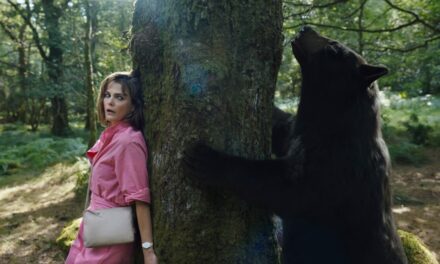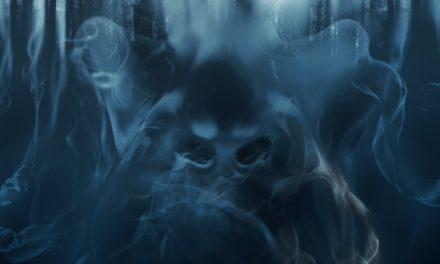It’s a little scary how intense the early praise for Avatar 2: Way of Water has been from critics. The hype is…well, let’s look at some actual quotes:
“It is impossible to talk about Avatar: The Way of Water without sounding hyperbolic. But James Cameron’s sequel is a truly dazzling cinematic experience that will have you floating on a blockbuster high.” – Lindsey Bahr, AP News
“For starters, the effects work is unbelievable; I still haven’t entirely wrapped my head around the fact that none of this stuff actually exists, that it’s all a meticulously rendered digital environment.” – Bilge Ebiri, Vulture
“I’ve always hated water levels in video games. I feel like this will be similar.” – Captain_Ass_Clown, Reddit
There you have it – all the scholarly analysis, including the revered criticism of Captain_Ass_Clown. Of course, I’m cherry-picking. The reviews are all over the place, and they’re completely subjective. What isn’t subjective, however, is the hard technology used to create the VFX in Avatar 2: The Way of Water. I don’t care how much any visual effects contrarian tries to downplay the oversaturated hype – if James Cameron spends 13 years and $2 billion on a sequel, the effects are damn sure gonna be worth at least the initial watch.
Here’s some evidence of why.
Image credit: Disney Studios
The VFX Studio rendering Avatar 2’s underwater performance capture was Weta Digital
When you want to master a technical process that’s never been done on this scale, you don’t hire the cast of Milf Manor on TLC. You hire Daniel Day-Lewis. So, James Cameron did what a great director does – he enlisted the minds capable of capturing and rendering extended underwater sequences filmed in a 900,000-gallon manufactured ocean tank.
The VFX supervisors for Avatar 2 were recruited from both the Weta Digital and ILM stables – R. Christopher White (King Kong, The Hobbit trilogy) and Wayne Stables (Game of Thrones, Avatar) of Weta Digital and from ILM, David Vickery (Jurassic World: Dominion, The Dark Knight). Four-time Academy Award-winner Joe Letteri rounded out the core as the Production VFX Supervisor. The production was put to task with how to navigate the fluid dynamics of underwater motion capture. Way back in 2017, James Cameron told Collider a bit about the obstacles facing them:
It’s never been done before and it’s very tricky because our motion capture system, like most motion capture systems, is what they call optical base, meaning that it uses markers that are photographed with hundreds of cameras. The problem with water is not the underwater part, but the interface between the air and the water, which forms a moving mirror. That moving mirror reflects all the dots and markers, and it creates a bunch of false markers.
To counteract such an issue, the crew had to know how to navigate a depth of technical obstacles. So, what they did was cover their entire tank of water with white plastic balls that would eliminate the reflections causing false markers, but still let light through to film. At the end of all this, what Cameron had was a deeply complex, data-rich capture of lighting, performance, and camera moves that made up his landscape template. To properly animate such a complicated world build, he needed a studio with the technology to bring it to life. Utilizing some of the most innovative virtual production minds in the industry at Weta Digital allowed Avatar 2’s underwater footage to be layered with animation into a rich, vibrant 3D world.
The production and VFX teams on Avatar 2 used new camera technology that could capture and render vivid ecosystems
Image credit: Disney Studios
When James Cameron developed the original Avatar, they were tasked with building a virtual framework and filling it in with an entire universe. The Pandora Mountains, the iridescent ferns, the jungle that made some viewers want to melt into their bong. Since then, these innovators have invented software and cameras capable of capturing and translating environmental templates of unprecedented scope. Joe Letteri spoke with Nerdist in an interview of how they developed the textured nuances of Caesar’s home forest in War of the Planet of the Apes, and how this technology could impact Avatar 2:
So we started looking at software to figure out how do ecosystems grow. And we worked on it for a few years not knowing exactly when we would need it, but knowing that we would need it. And it turned out to be ready about the time that we had to do that last sequence, and we said, okay, let’s roll it out. So yeah, some of these longer-term projects do dovetail like that.
A major jump from the first Avatar to Avatar 2 was the underwater 3D camera invented by cinematographer Pawel Achtel. This man straight-up revolutionized and enabled their shoot, as the original underwater 3D camera was comprised of a bulky rig and picked up distortion and artifacts due to having to shoot through a port. Achtel’s Deep X 3D rig and use of Nikonos 15MM unhoused submersible lenses allowed them to map the marine ecosystem with absolute clarity and without distortion or artifacts clouding the shot. They could film an environment, like a forest or a coral reef, and capture a 3D product that carried immaculate depth and focus. Achtel was quoted in Y.M. Magazine, saying:
The most difficult aspect of filming underwater is the optics. As it turns out it is the ultimate factor limiting image quality when filming below the waves. For decades the state-of-the-art was to place traditional lenses designed for filming on land behind flat and dome ports. Whilst this appears as a reasonable solution, it became apparent that aberrations, image plane curvature, and distortions caused by those ports severely limit the image quality that can be achieved when using housed lenses.
The Avatar 2 production now had the ultra-high resolution tools to build a sharply translucent underwater IMAX 3D world never before executed on this scale.
Avatar 2 built even further on the idea of realistically mirrored facial animation
Image credit: Disney Studios
StudioBinder did a gorgeous breakdown of the jump from the technology in the first Avatar to the improvements made in the second. In regards to the level James Cameron wanted to reach with the nuances of facial animation:
“I was on a quest for the holy grail, and the holy grail was to be able to reproduce full human emotion in a CG character.”
A key innovative piece of the first Avatar was the implementation of the helmet cam, with a camera mounted inches from the actor’s face. It’s well-documented that Cameron wanted even greater capture of human emotion for the second film. Producer Jon Landau told IndieWire while filming way back in 2018:
But, again, as we’ve always said, these movies are more about the facial performance than anything else. And, on the first movie, we used a single, standard-definition camera to record the facial performance. Now we’re using two HD cameras to record that performance, to make sure that we’re holding to as close as possible to what Zoe (Saldana) gives us.
To enhance these facial nuances, Weta Digital went into the lab on the anatomical level to develop facial animation tech that could mirror real emotion. Beforesandafters even posted a tech paper displayed by the Weta Digital team at SIGGRAPH Asia that positioned that what they needed for perfect facial animation was an architecture that enabled:
• Automatic optimization of a face from high-quality dynamic facial scans
• Direct and interactive manipulation of facial expressions
• Animation transfer from an actor to character
The Weta Digital team was confident they had developed an advanced facial animation system:
We validate our facial system by showing compelling animated results, applications, and a quantitative comparison of our facial reconstruction to ground truth performance capture. Our system is being intensively used by a large creative team on an upcoming blockbuster film.
The Avatar 2 VFX are better than the first because…James Cameron says so
Image credit: Disney Studios
In a December interview with Comicbook.com, Cameron…what do you call it? He talked some shit.
Our team at WETA Digital is constantly having new hires, and it’s coming out of that pool,” Cameron continued. “So it improves everything. That said, WETA Effects, as it’s called now, is the best. Right? Industrial Light & Magic does great work, but when it comes to the kind of emotive facial stuff that we’re doing… Thanos? Come on. Give me a break. You saw [‘Avatar: The Way of Water’]. It’s not even close. It’s what WETA did.
To be fair, Cameron didn’t explicitly say the Avatar 2 visual effects were better than the first. He implied that Marvel, the franchise that has earned $22.5 billion at the box office since 2010, has subpar facial animation. Cameron is the pawn shop owner with a samurai sword, and Marvel, clearly, is his gimp.
Does the VFX of Avatar 2 carry the film?
A lot of criticism of the first Avatar was directed at plot and dialogue. The plot was perceived as formulaic and a Dances with Wolves re-telling. Some of the lines, particularly of the mercenaries, were a little cringe (Yeah! Get Some!).
But it doesn’t matter.
We as a cinematic audience fall in love with well-built worlds. Sure, the original Star Wars was nominated for Best Original Screenplay, but it’s not a requirement. Avatar visually induces a sense of wonder. Curling mists over mossy mountains, prehistoric dolphin creatures cresting the waves, an entire world of phosphorescence and wild things with teeth. The artists who poured their creative talent into the project for years have built audiences a world that is so immersive, they had to invent cameras to film it.
Once upon a time, people put their butts in a theater seat just to experience the sensation of an immersive escape. Now, people stream and watch content on four-inch phone screens.
Maybe Avatar 2 is a pendulum swing to remind people there’s still a little magic on the big screen.

![Where The Crawdads Sing: The Book Brought to Life [Trailer]](https://wellfixitinpost.com/wp-content/uploads/2022/06/Where-the-Crawdads-Sing-feat-01-res-440x264.jpg)


